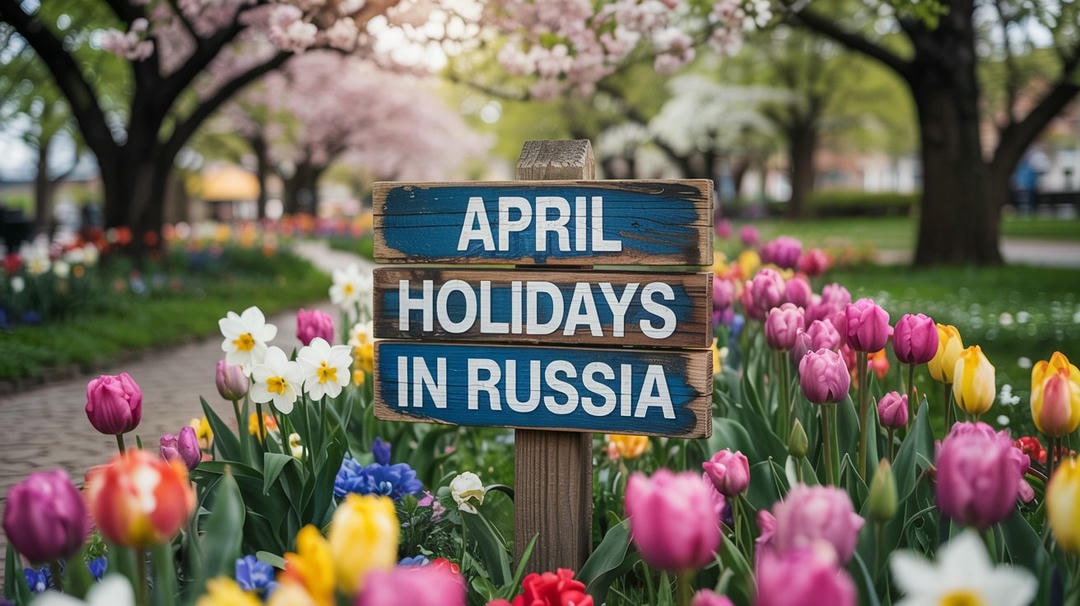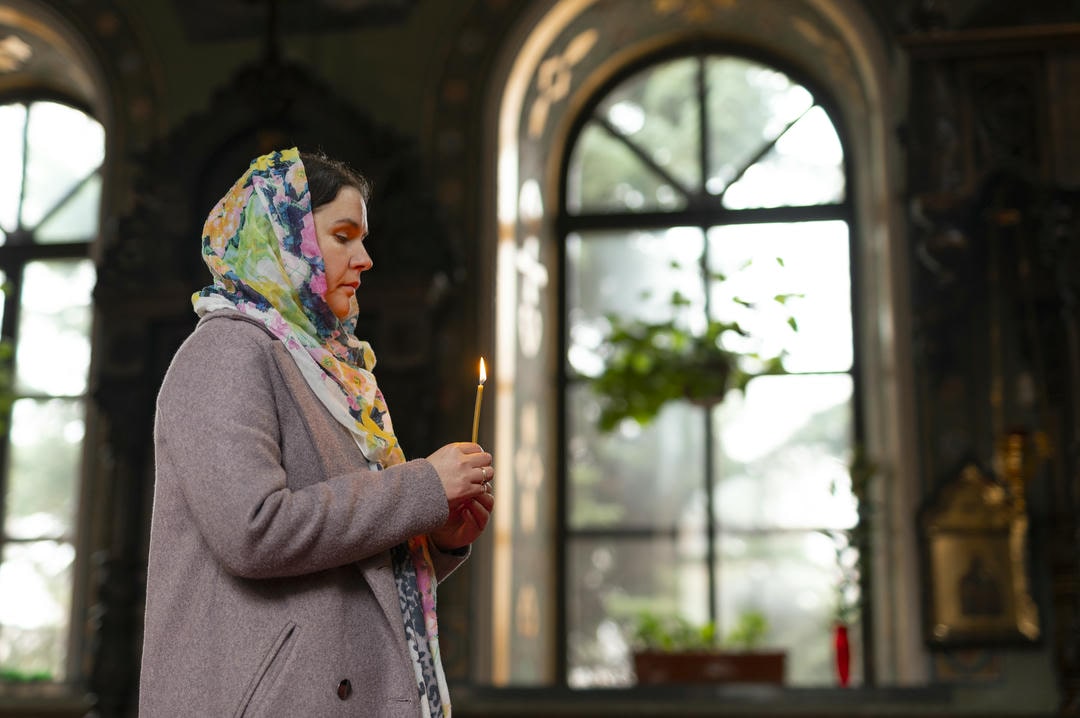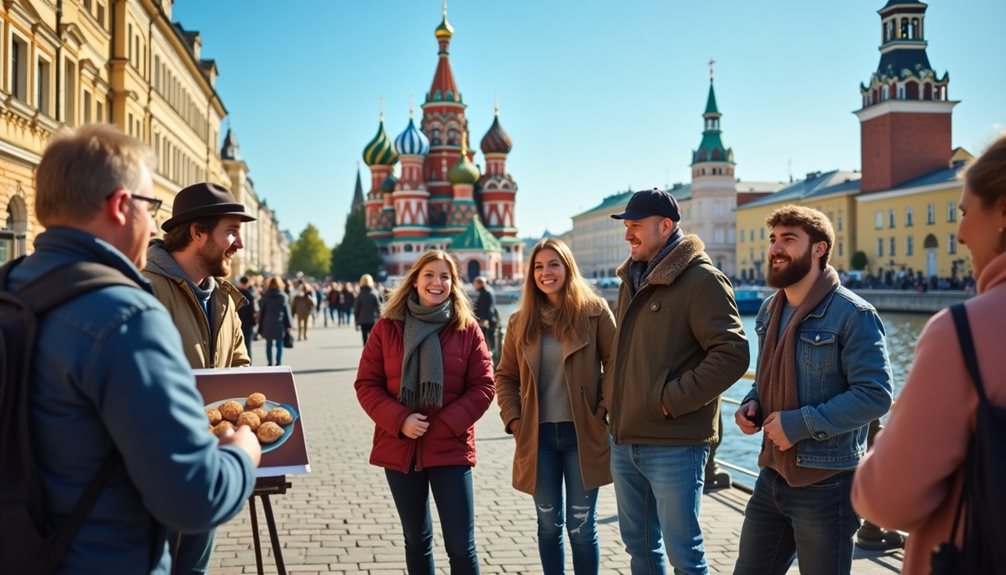April in Russia serves as a vibrant marker of cultural identity and renewal. The month is rich with celebrations that blend humor, history, and spirituality. Events like the Feast of Laughter and Cosmonautics Day reflect both light-heartedness and national pride. Traditional customs, such as egg painting during Holy Week, unite families. Yet, as these practices evolve, younger generations navigate their relevance in a modern context. How do these intersections shape the future of Russian celebrations?
Introduction

As April unfolds in Russia, it brings a vibrant tapestry of celebrations that reflect the country’s rich cultural heritage and historical significance. These spring festivities are deeply intertwined with the rhythms of nature and the collective memory of the Russian people, often highlighting themes of renewal and fertility after the long winter months.
The celebrations serve as a reminder of the enduring cultural importance of community, family, and the natural world, fostering unity and continuity across diverse regional traditions. While April is often associated with the rejuvenation of nature, its significance in Russia extends far beyond seasonal change, embodying a profound cultural awakening that resonates throughout the nation.
This month is marked by a series of spring festivals where communities gather to celebrate the return of warmth and light. These events promote nature appreciation and feature traditional customs such as outdoor festivities and folk performances, which highlight a collective rebirth and promote unity.
April in Russia is a pivotal moment, intertwining seasonal change with deep-rooted cultural identity. The month is characterized by a rich fabric of cultural, historical, and religious celebrations that reflect the nation’s diverse heritage. This blend showcases Russia’s cultural diversity, combining Slavic traditions with influences from various ethnic groups.
Historically, April is a time for reflection and renewal, often linked to ancient agrarian practices and religious observances. Celebrations during this month are steeped in historical context, emphasizing communal bonds and shared narratives. As the country shifts into spring, these festivities honor past traditions while invigorating contemporary society, fostering a collective identity rooted in both history and cultural richness.
April 1: Feast of Laughter
In Russia, the Feast of Laughter on April 1st serves as a vibrant celebration of humor and lightheartedness, marking a day dedicated to pranks and playful mischief.
This occasion illustrates the cultural significance of laughter therapy, emphasizing its role in fostering community bonds and alleviating stress. People engage in friendly tricks, creating a spirit of camaraderie and joy that transcends daily hardships.
By embracing humor, Russians acknowledge its therapeutic effects, promoting resilience in a society often burdened by challenges.
Ultimately, the Feast of Laughter reinforces the importance of levity, illustrating how laughter can unite individuals and uplift spirits amidst adversity.
Russian Traditions of April Fool’s Day

The celebration of the Feast of Laughter in Russia seamlessly connects to the origins of April Fool’s Day, a day steeped in tradition and cultural nuance.
Rooted in ancient customs celebrating the arrival of spring, it evolved into a unique occasion marked by April pranks.
As laughter fills the air on April Fool’s Day, Russians engage in a variety of pranks that reflect both cultural humor and societal commentary.
Common prank ideas include placing fake spiders in unsuspecting friends’ bags or pretending to sell an imaginary product on the street.
Joke traditions often feature light-hearted embarrassment, with friends playfully tricking each other into believing absurd scenarios, such as announcing a fake lottery win.
These antics serve not only to amuse but also to foster camaraderie, highlighting the importance of humor in everyday life and the Russian ability to find joy even in the most mundane situations.
April 12: Cosmonautics Day
April 12 marks a historic milestone in human history, commemorating Yuri Gagarin’s groundbreaking achievement as the first person to journey into space aboard Vostok 1 in 1961. Known as Cosmonautics Day, this annual celebration honors not only Gagarin’s feat but also humanity’s relentless pursuit of knowledge and exploration beyond Earth.
Gagarin’s 108-minute flight, during which he orbited Earth, symbolized the triumph of Soviet technology and human ingenuity during the Space Race. His famous declaration, “Poyekhali!” (“Let’s go!”), at liftoff became an emblem of the dawn of human space exploration. This achievement transcended national boundaries, inspiring awe and igniting a global fascination with space. Despite the Cold War tensions, Gagarin’s success was celebrated worldwide, momentarily bridging ideological divides.
In Russia, Cosmonautics Day fosters national pride and inspires future generations to explore science and innovation. Celebrations include parades, exhibitions, and educational programs that highlight advancements in space exploration since Gagarin’s flight. Museums host special events, offering insights into the cosmos while honoring Gagarin’s legacy. These activities unite communities, blending historical reflection with cultural appreciation.
Gagarin’s journey also had profound implications for science and engineering careers worldwide. His flight demonstrated the possibilities of human achievement and sparked aspirations for further exploration of the universe. Although he never flew in space again due to safety concerns, his contributions to the Soviet space program remained invaluable until his untimely death in 1968 during a routine flight.
Today, Gagarin’s legacy endures not only through commemorative events but also through landmarks named in his honor, such as the Gagarin Cosmonaut Training Center and Gagarin Start launch pad at Baikonur Cosmodrome. His story continues to inspire cooperation in space exploration, symbolizing humanity’s shared quest to understand its place in the cosmos.
April 20: Orthodox Easter (Pascha)

As spring unfolds, the observance of Orthodox Easter, known as Pascha, emerges as one of the most significant religious events in Russia.
This deeply rooted celebration is marked by a rich mosaic of Paschal traditions and Easter customs, reflecting the cultural and spiritual heritage of the nation. Families prepare for weeks, baking kulich—sweet bread—and painting eggs, which symbolize rebirth and renewal.
The week preceding Pascha, Holy Week, is filled with communal activities, emphasizing unity and faith. As night falls on Easter Saturday, the joyous proclamation of Christ’s resurrection resonates through churches, igniting a sense of hope and renewal in the hearts of believers.
Religious Services and Traditions

April in Russia is a time of profound spiritual significance for Orthodox Christians, marked by the culmination of Holy Week. The faithful gather for midnight services to celebrate the resurrection of Christ, a solemn yet uplifting occasion. A cherished tradition during this period is egg decorating, symbolizing new life and resurrection. Families create vibrant, intricate designs using natural dyes, fostering creativity and strengthening community bonds.
These traditions weave a fabric of faith, renewal, and cultural heritage, highlighting the importance of communal life. Family gatherings during April holidays are a cornerstone of this communal life, reflecting both cultural heritage and familial bonds. Cherished family recipes, passed down through generations, become vessels of memory and identity. Traditional dishes like pirozhki and kulich not only delight the palate but also symbolize the warmth of family ties.
Modern Celebrations
Modern observances of April holidays in Russia have evolved, blending traditional customs with contemporary influences. Spring festivals like Maslenitsa now incorporate global elements, showcasing Russia’s cultural diversity. Urban celebrations feature music, art, and culinary experiences from various ethnic traditions, creating a vibrant mosaic of communal engagement. Social media amplifies these festivities, allowing for wider participation and shared experiences. This fusion of old and new highlights a growing awareness of cultural heritage while embracing modernity.
Younger generations navigate this interplay between tradition and innovation, infusing age-old customs with contemporary relevance. Digital engagement plays a vital role, as social media platforms become vibrant spaces for sharing experiences and personal interpretations of these celebrations. Young people create viral content that highlights their unique takes on traditional observances, fostering a sense of community while promoting cultural heritage.
The influence of global trends on Russian celebrations reflects a broader phenomenon where cultural exchange shapes local observances. Traditional events blend with international influences, leading to unique adaptations. For instance, the rising popularity of Earth Day aligns with Russia’s growing environmental consciousness, prompting community activities that resonate globally. Social media amplifies these trends, enabling young Russians to share their experiences and ideas, further enriching local customs. This interplay of global influences fosters a dynamic cultural landscape, illustrating how traditional Russian celebrations evolve while maintaining their distinct identity amidst a rapidly changing world.
Conclusion
As April holidays in Russia continue to evolve, they remain deeply rooted in the nation’s cultural identity, reflecting a unique blend of historical nuances and contemporary practices. The coexistence of traditional beliefs with modern humor, as seen in celebrations like Easter and April Fool’s Day, creates a dynamic cultural landscape. These festivities not only honor the past but also celebrate community and identity, enriching Russian society.
The interplay of humor, history, and faith during this month offers a compelling reflection of Russia’s complex cultural identity. Humor serves as a lighthearted counterbalance to historical tribulations, allowing citizens to engage with their past while embracing the present. Celebrations like April Fools’ Day intertwine with deep-rooted faith expressions, demonstrating how laughter can coexist with solemnity. This blend fosters resilience and reinforces community ties, as shared stories and jokes become vehicles for both remembrance and hope, illustrating a uniquely Russian approach to navigating life’s paradoxes.





